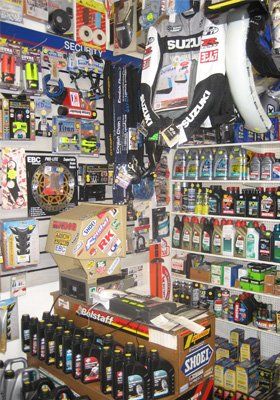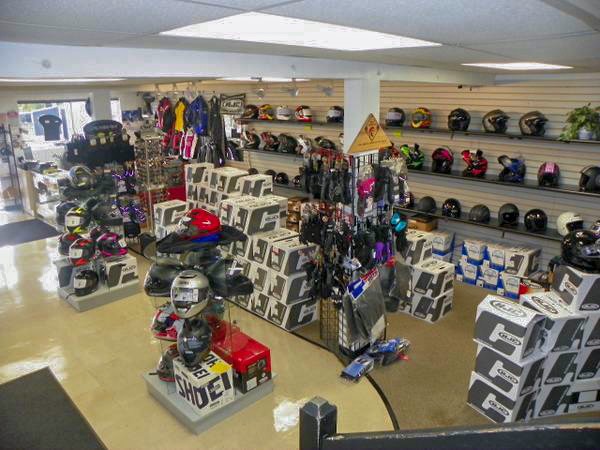See Our Motorcycle Shop for Expert Recommendations and Quality Products
See Our Motorcycle Shop for Expert Recommendations and Quality Products
Blog Article
Understanding Motorbike Gears: Just How to Maximize Your Riding Experience
In the world of motorcycling, understanding the art of equipment control is critical for enhancing your riding performance. Correctly using and recognizing motorbike equipments can substantially impact gas, control, and acceleration performance, changing a typical experience right into a seamless, electrifying journey.
Comprehending Gear Mechanics
At the core of bike dynamics, gear technicians play an essential function in transforming engine power into movement, eventually determining speed and control. The gear proportions, meticulously made, establish the relationship between engine revolutions and wheel turns, affecting velocity and fuel efficiency.
Recognizing gear auto mechanics begins with recognizing the relevance of the gearbox, which houses several gears of differing dimensions. These equipments connect through a process called meshing, where teeth of different gears involve to transmit power. The accuracy of this communication is essential; any kind of misalignment or damages can cause inefficient power transfer, hindering performance. Additionally, the setup and dimension of equipments affect the motorbike's ability to manage various lots and speeds.
Furthermore, the concept of gear moving is important to optimizing performance. Smooth and timely changes guarantee that the engine operates within its optimal power band, preventing unneeded pressure and enhancing durability (moto parts nz). By comprehending these mechanical intricacies, motorcyclists can attain an unified mix of control, efficiency, and power, raising their riding experience
Timing Your Shifts
Shift timing mastery is vital for optimizing motorcycle performance and improving the riding experience. Effectively timed changes make certain that the engine operates within its ideal power band, which is vital for maintaining control, achieving smooth acceleration, and guaranteeing the longevity of the motorbike. Motorcyclists need to establish an intuitive sense of when to shift equipments, which entails comprehending the connection between engine changes per min (RPM) and speed.
To grasp shift timing, pay close interest to the engine's sound and feel, as these supply important hints regarding when to alter gears. When the engine comes close to the upper variety of its power band without getting to the redline, the excellent change point commonly occurs - moto parts nz. Changing also early can cause a lack of power, while moving too late may trigger unnecessary engine stress
Additionally, roadway conditions and riding design impact change timing. For example, in urban settings, smoother and a lot more frequent shifts might be needed to browse traffic efficiently. In comparison, throughout highway riding, less changes at greater speeds can be better suited. Exercising in different settings will certainly boost your ability to time changes precisely, eventually boosting your riding experience to an expert level.
Enhancing Gas Effectiveness
While understanding motorcycle gears is critical for efficiency, enhancing fuel effectiveness is equally important for both economic and ecological reasons. Optimum fuel usage not just reduces operational expenses however additionally minimizes the environmental impact of riding. To achieve this, one have to recognize the elaborate partnership between equipment option and engine performance.
Firstly, choosing the appropriate gear at suitable rates can significantly impact gas intake. Riding in a greater equipment at reduced rates can result in engine hauling, which is harmful to both gas economic climate and engine health and wellness. On the other hand, riding in lower gears at high speeds results in unnecessary fuel consumption. Thus, preserving an optimal equilibrium by changing equipments abreast with roadway problems and prepared for maneuvers is essential.
In addition, regular upkeep plays a critical duty in gas efficiency. Ensuring that the bike is well-tuned, with clean air filters and correctly blew up tires, can decrease and boost the rules of aerodynamics gas wastage. In addition, embracing a riding design that embraces gradual acceleration and smooth deceleration can add to better fuel economy.

Strategies for Smooth Transitions
Attaining smooth gear transitions is essential to enhancing the riding experience and guaranteeing the durability of a motorcycle's transmission system. Proper equipment shifting not just adds to a seamless trip yet likewise lessens wear and tear on the mechanical parts. To grasp the art of smooth changes, bikers need to concentrate on a few vital strategies.

Second of all, clutch control plays a pivotal function. Engaging and disengaging the clutch smoothly calls for technique. The clutch bar ought to be launched slowly, allowing for a smooth transfer of power from the engine to the wheels without triggering a shock or sudden activity.

Adjusting to Roadway Problems
Navigating varied road problems is an essential skill for any type of motorcyclist intending to preserve control and safety and security. Whether you're riding on damp surfaces, gravel roadways, or browsing doglegs, your ability to adjust your equipment usage and riding technique is paramount. Comprehending just how to readjust your gears why not try this out appropriately can dramatically influence traction and stability, making certain a more secure trip.
On damp roads, it is a good idea to preserve greater gears to lower torque and decrease wheel spin. This technique assists preserve grasp on slippery surfaces, enabling smoother velocity and slowdown. In contrast, when riding on gravel or uneven surface, reduced gears are more suitable. Lower gears offer better control and enable you to react more swiftly to unforeseen adjustments in the road surface area.
Sharp curves demand exact gear administration to balance rate and control. Downshifting prior to getting in a contour can assist preserve momentum while making sure the motorbike continues to be stable throughout the turn. Constant method in varied conditions improves your capacity to respond and forecast to adjustments in roadway appearance and slope.
Conclusion
Mastering motorcycle equipments substantially boosts the riding experience by improving fuel, control, and velocity performance. Adjusting gear choice to different road problems, such as utilizing greater equipments on damp surfaces and lower gears on crushed rock, additional improves handling and security.
Understanding equipment mechanics begins with identifying the significance of the gearbox, which houses several gears of differing dimensions. These equipments interact via a procedure recognized as meshing, where teeth of different gears involve to transmit power (motorcycle shop). Gentle adjustments to the throttle throughout equipment changes can prevent jerky movements and maintain a regular riding pace
Whether you're riding on wet surface areas, crushed rock roadways, or browsing sharp turns, your ability to adapt your equipment use and riding technique is critical. Adapting equipment selection to numerous road problems, such as using greater equipments on damp surface areas and reduced Full Article gears on gravel, further enhances handling and safety and security.
Report this page